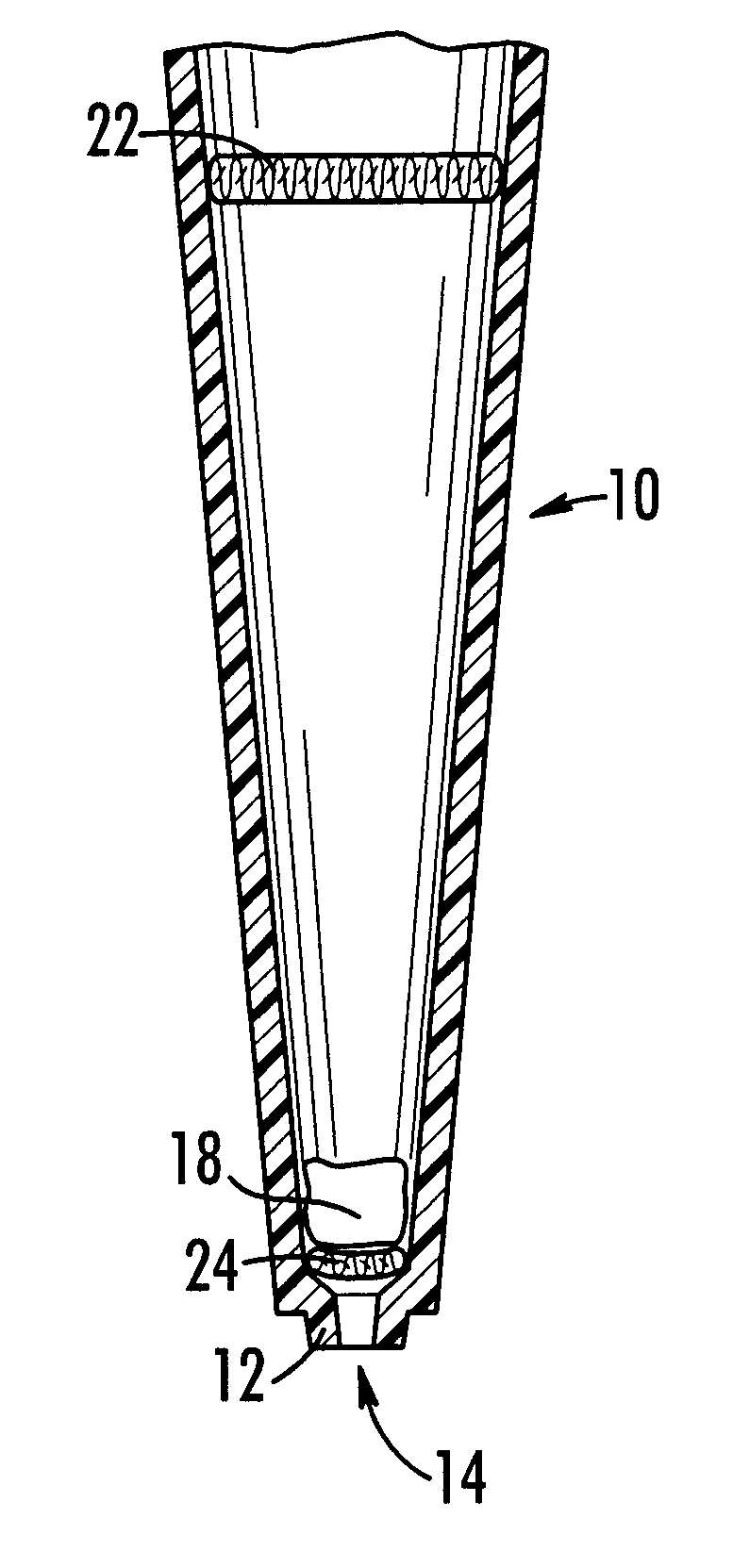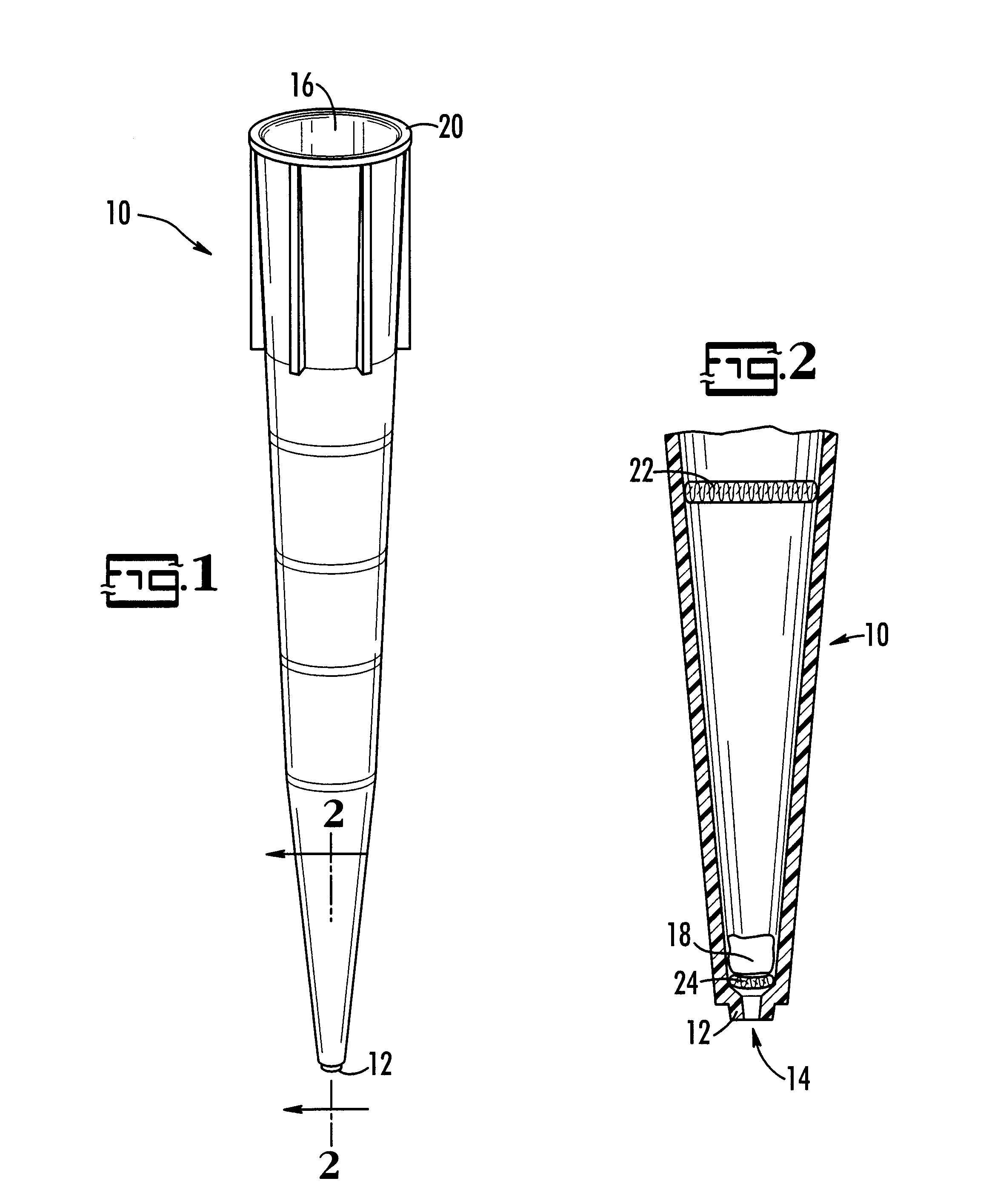Disposable pipette extraction
a pipette and pipette technology, applied in the field of pipette extraction, can solve the problems of matrix-bound particles not being able to reach maximum contact with the sample solution, requiring significant solvent volumes (at least 5 ml total), and the extraction time taking over 20 minutes
- Summary
- Abstract
- Description
- Claims
- Application Information
AI Technical Summary
Problems solved by technology
Method used
Image
Examples
Embodiment Construction
The present invention is a disposable pipette tip extraction apparatus for use in rapid, disposable, and low-volume solid phase extraction of analytes.
With reference to FIG. 1 and FIG. 2, a typical pipette tip 10 is shown having a proximal end 12 with lower opening 14 and a distal end 20 with upper opening 16. Pipette tip 10 can be made of any inexpensive material or commodity plastic, but is preferably made from a polyolefin, and most preferably made from polyethylene, polypropylene, polyethylene-terephthalate, or polytetrafluoroethylene. The distal end 20 is configured to fit on the end of a standard laboratory pipettor. The proximal end 12 is configured to allow the passage of whatever fluid one wishes to sample with the pipettor. Moreover, the pipette tip is preferably conical in shape, with distal end 20 having a larger internal diameter than proximal end 12.
FIG. 2 shows a cross section of an embodiment of the present invention. Within the lumen of pipette tip 10 is first frit ...
PUM
| Property | Measurement | Unit |
|---|---|---|
| volumes | aaaaa | aaaaa |
| permeable | aaaaa | aaaaa |
| semi-permeable | aaaaa | aaaaa |
Abstract
Description
Claims
Application Information
 Login to View More
Login to View More - R&D
- Intellectual Property
- Life Sciences
- Materials
- Tech Scout
- Unparalleled Data Quality
- Higher Quality Content
- 60% Fewer Hallucinations
Browse by: Latest US Patents, China's latest patents, Technical Efficacy Thesaurus, Application Domain, Technology Topic, Popular Technical Reports.
© 2025 PatSnap. All rights reserved.Legal|Privacy policy|Modern Slavery Act Transparency Statement|Sitemap|About US| Contact US: help@patsnap.com



